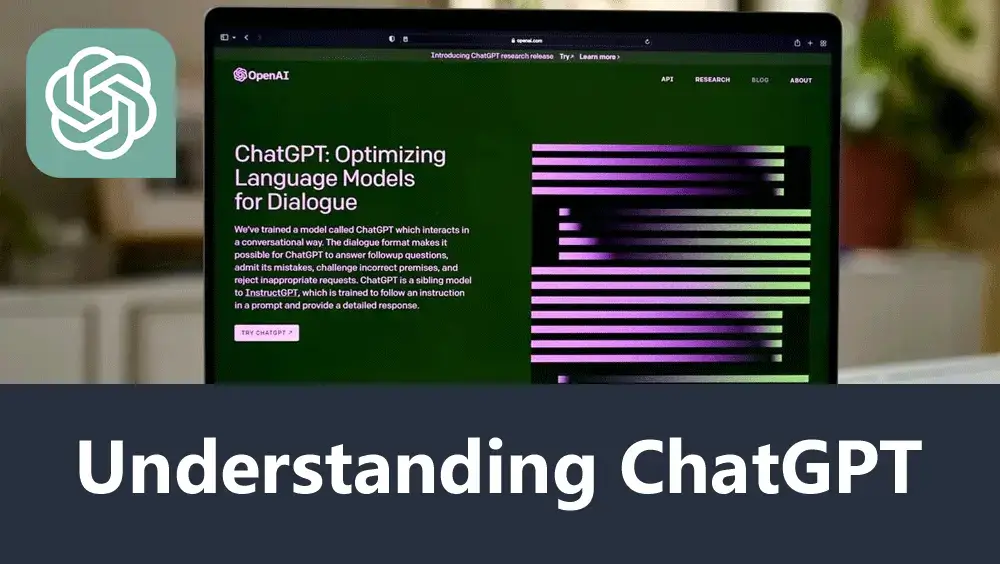The Evolving Role of AI in Marketing Analytics
Artificial intelligence (AI) has revolutionized the way businesses approach marketing analytics. By automating the data analysis process, AI-powered marketing analytics tools enable marketers to gain actionable insights and make data-driven decisions with ease. In this article, we will explore how ChatGPT, a powerful language model developed by OpenAI, can be harnessed to transform your marketing analytics strategy.
Introducing ChatGPT for Better Marketing Analytics
ChatGPT is an AI language model that has garnered significant attention for its capabilities in natural language processing, understanding, and generation. It offers a wide range of applications, from content creation to data analysis. In this guide, we will delve into how you can leverage ChatGPT to supercharge your marketing analytics for better results.
Understanding ChatGPT
Overview of ChatGPT and its Capabilities
ChatGPT is based on the GPT-4 architecture, which allows it to excel in tasks that require a deep understanding of natural language. Its potential applications include generating text summaries, sentiment analysis, content optimization, and identifying trends and patterns in large datasets.
How ChatGPT Surpasses Traditional Analytics Tools
Traditional analytics tools often require manual intervention and significant technical expertise to use effectively. In contrast, ChatGPT’s AI-driven approach simplifies the process, enabling users to analyze complex datasets quickly and efficiently. This makes it an ideal solution for both beginners and experienced marketers.
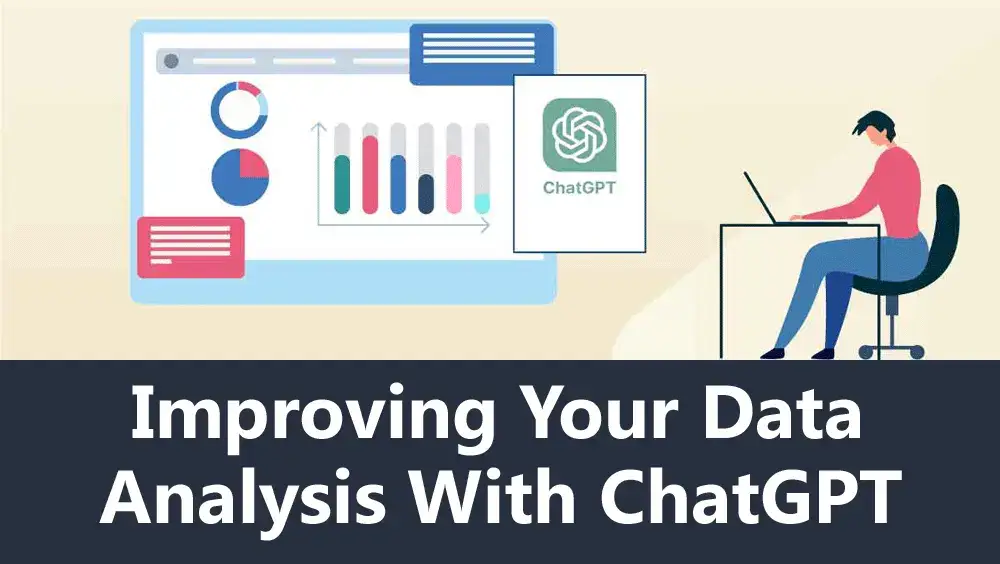
Improving Your Data Analysis with ChatGPT
Enhancing Data Quality and Preparation
ChatGPT can help you improve the quality of your data by identifying inconsistencies, duplicates, and missing values. For instance, let’s say you have a dataset containing customer reviews, but some entries have missing ratings. ChatGPT can analyze the text of the reviews and generate an estimated rating based on the sentiment expressed, ensuring you have a complete dataset for further analysis.
Generating Insights from Unstructured Data
Unstructured data, such as social media posts or customer reviews, can be challenging to analyze using traditional analytics tools. ChatGPT, however, can easily process this information and extract valuable insights. For example, you can use ChatGPT to analyze customer feedback from various channels and identify common themes or areas for improvement.
Identifying Trends and Patterns with Ease
ChatGPT’s ability to process large amounts of data allows it to identify trends and patterns that might otherwise go unnoticed. This can be particularly useful for marketers looking to capitalize on emerging trends. For example, you can use ChatGPT to analyze social media conversations and identify popular topics or hashtags relevant to your industry.
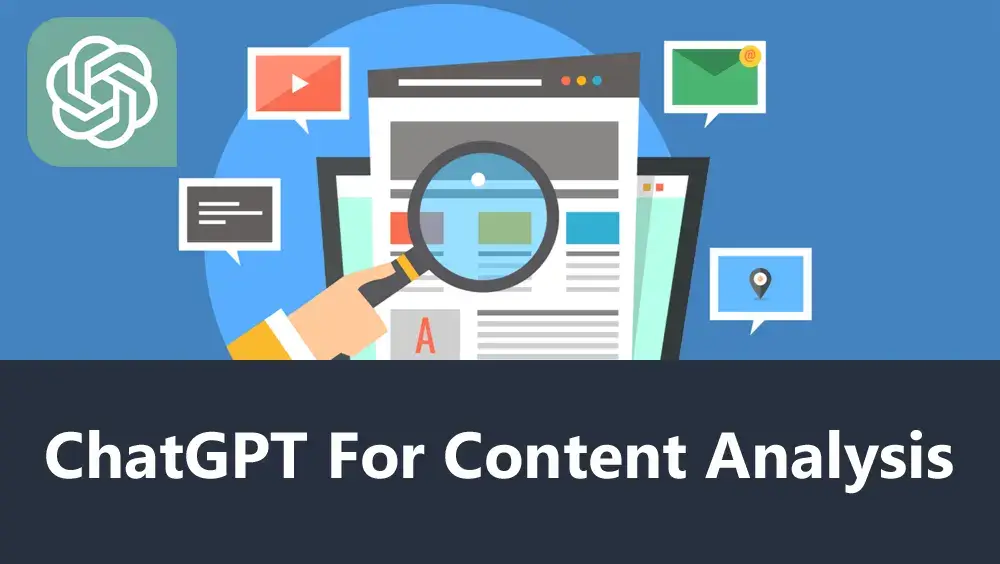
ChatGPT for Content Analysis
Analyzing Customer Reviews and Sentiment
Sentiment analysis is a crucial aspect of marketing analytics, as it helps you understand how customers perceive your brand, products, or services. ChatGPT can analyze customer reviews and determine the overall sentiment, as well as identify specific areas of praise or criticism. This can help you make data-driven decisions to improve customer satisfaction and brand perception.
For instance, you can use ChatGPT to analyze reviews for a specific product, identifying common complaints or areas where customers are particularly satisfied. Based on these insights, you can make targeted improvements to address customer concerns and enhance your product offering.
Mining Social Media for Consumer Insights
Social media platforms are a treasure trove of consumer insights, but extracting valuable information from the vast amount of data can be challenging. ChatGPT can help you mine social media data for insights on customer preferences, trends, and potential market opportunities.
For example, imagine you want to launch a new line of eco-friendly products. You can use ChatGPT to analyze social media conversations around sustainability and eco-friendly products. This can help you identify consumer concerns, popular eco-friendly brands, and potential gaps in the market that your new product line could fill.
Optimizing Content and Copywriting Strategies
ChatGPT can also be used to optimize your content and copywriting strategies, ensuring that your marketing materials resonate with your target audience. For example, you can analyze the performance of your blog posts, social media updates, or email campaigns and use ChatGPT to generate suggestions for improvement, such as more engaging headlines or persuasive calls-to-action.
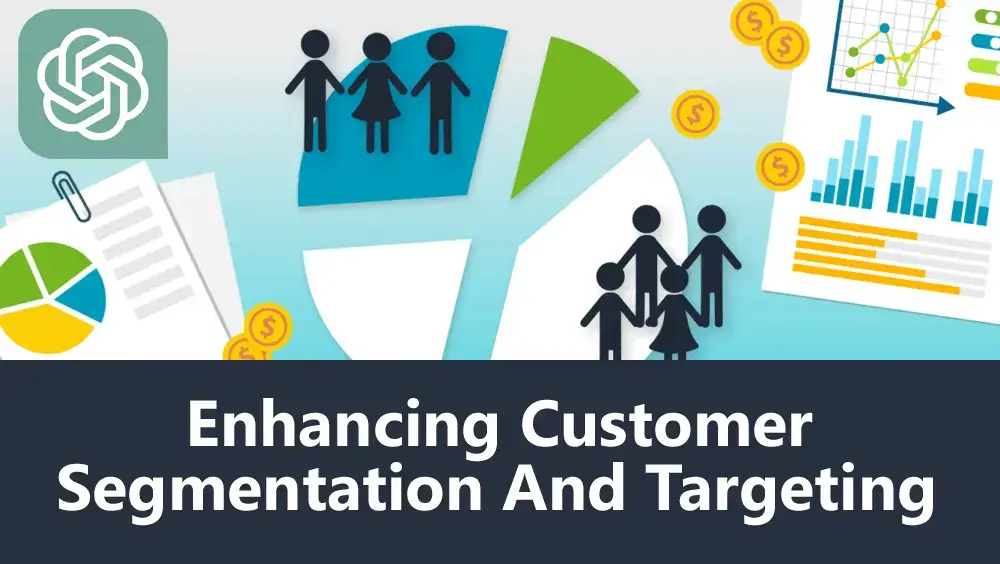
Enhancing Customer Segmentation and Targeting
Identifying Customer Personas Using ChatGPT
Customer segmentation is crucial for effective marketing, as it enables you to tailor your messaging and offers to specific groups. ChatGPT can help you identify customer personas by analyzing your customer data and identifying common characteristics, preferences, and behaviors.
For example, let’s say you have a dataset containing customer demographics, purchase history, and browsing behavior. ChatGPT can analyze this data and group customers with similar attributes, helping you create detailed personas that can inform your marketing strategy.
Refining Audience Targeting Through Data Insights
By using ChatGPT to analyze your customer data, you can uncover valuable insights that can help you refine your audience targeting. For instance, you might discover that a particular segment of your audience responds well to personalized offers, while another prefers more generic promotions. Armed with this information, you can tailor your marketing efforts to better resonate with each segment, ultimately improving campaign performance and ROI.
Discovering Hidden Niches and Market Opportunities
ChatGPT’s advanced data analysis capabilities can help you discover hidden niches and market opportunities that might otherwise go unnoticed. For example, by analyzing customer feedback and social media data, you might uncover an unmet need for a specific product or service within your target market. This information can help you develop new offerings and capitalize on untapped market potential.
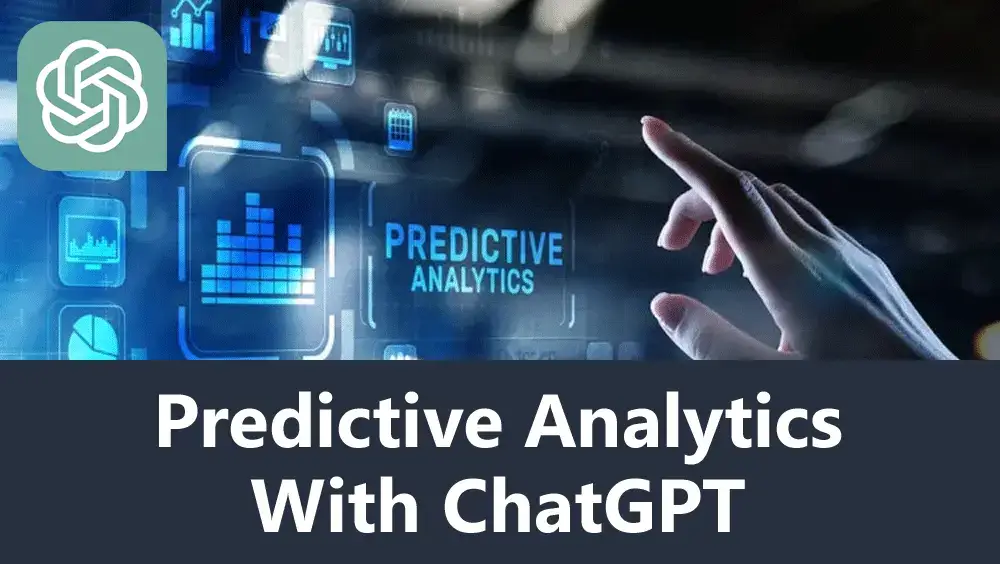
Predictive Analytics with ChatGPT
Forecasting Customer Behavior and Trends
One of ChatGPT’s most powerful applications is predictive analytics, which can be used to forecast customer behavior and trends. By analyzing historical data, ChatGPT can generate predictions for future customer actions, helping you make proactive, data-driven decisions.
For example, imagine you want to forecast demand for a specific product during the holiday season. ChatGPT can analyze past sales data, taking into account factors like seasonality and promotional activities, to predict future sales and help you optimize inventory management and marketing efforts.
Predicting Campaign Performance and ROI
ChatGPT can also help you predict the performance of your marketing campaigns and calculate expected ROI. By analyzing past campaign data and considering factors like target audience, creative elements, and media channels, ChatGPT can generate predictions for key performance indicators (KPIs) such as click-through rates, conversions, and revenue.
This can be particularly useful when planning and budgeting for future marketing initiatives, as it enables you to allocate resources more effectively and set realistic expectations for campaign performance.
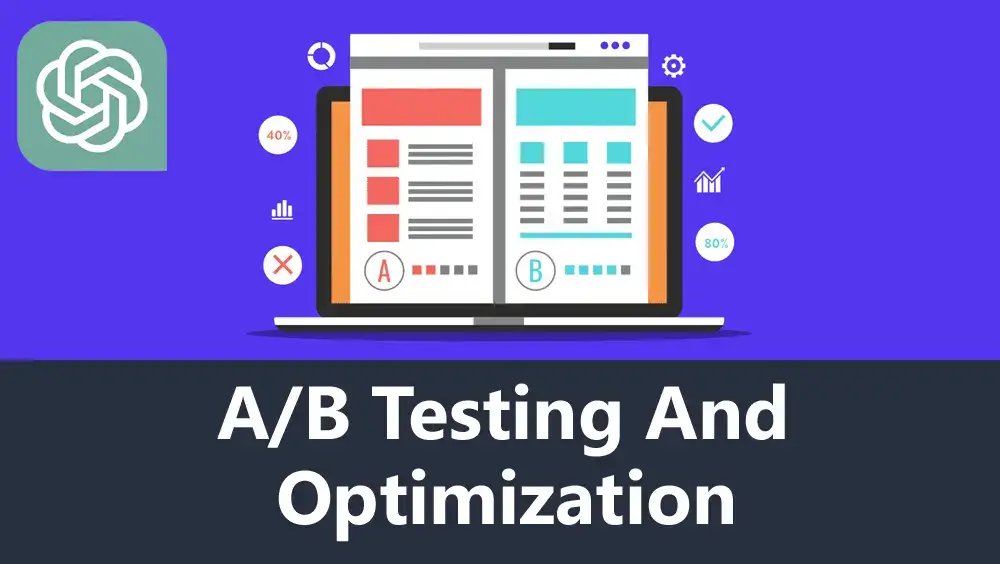
A/B Testing and Optimization
Designing More Effective A/B Tests with ChatGPT
A/B testing is an essential tool for optimizing marketing campaigns and maximizing ROI. ChatGPT can help you design more effective A/B tests by generating variations for elements like headlines, images, or calls-to-action, based on your marketing objectives and target audience.
For example, let’s say you want to test different headlines for an email campaign promoting a new product. ChatGPT can generate several headline variations, each tailored to resonate with your target audience and drive the desired action.
Interpreting Test Results for Actionable Insights
Once you have run your A/B test, ChatGPT can help you interpret the results and identify actionable insights to improve your marketing efforts. By analyzing the performance of each variation and considering factors like audience demographics and engagement metrics, ChatGPT can help you determine which version was most effective and why. This information can then be used to refine your marketing materials and inform future campaign decisions.
For example, if your A/B test revealed that a particular headline resulted in higher open rates and conversions, you might choose to use similar language or messaging in future email campaigns to drive better results.
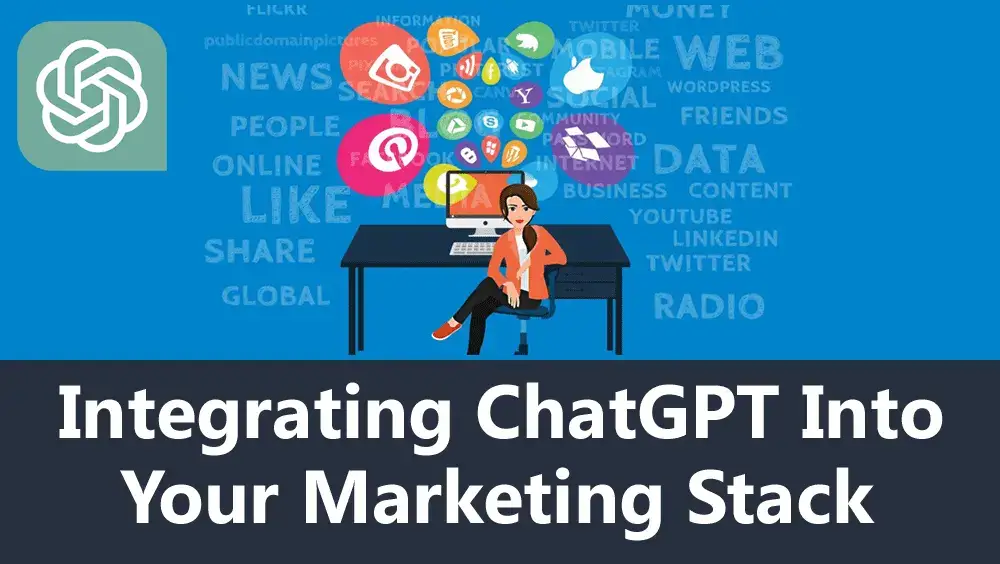
Integrating ChatGPT into Your Marketing Stack
Combining ChatGPT with Existing Analytics Tools
To get the most out of ChatGPT, it’s essential to integrate it with your existing marketing analytics tools, such as Google Analytics, Adobe Analytics, or social media management platforms. By combining these tools with ChatGPT, you can streamline your analytics processes and gain even deeper insights into your marketing efforts.
For example, you might use Google Analytics to track website performance metrics, then use ChatGPT to analyze visitor behavior and identify opportunities to improve user experience or conversion rates.
Setting up ChatGPT for Seamless Workflow Integration
Integrating ChatGPT into your marketing analytics workflow may require some initial setup, such as connecting APIs, setting up authentication, or configuring data pipelines. However, once integrated, ChatGPT can become a seamless part of your analytics process, enabling you to access powerful AI-driven insights with ease.
To integrate ChatGPT into your workflow, you’ll need to work closely with your development or IT team to ensure a smooth implementation. It’s also essential to provide adequate training and documentation for your marketing team so they can effectively utilize ChatGPT’s capabilities.

Ensuring Data Security and Privacy
When using ChatGPT for marketing analytics, it’s crucial to ensure that your data is secure and privacy is maintained. This includes implementing data encryption, access controls, and regular security audits. Additionally, you should always adhere to relevant data privacy regulations, such as GDPR or CCPA, when handling customer data.
Recap of ChatGPT’s Impact on Marketing Analytics
In conclusion, ChatGPT offers a powerful solution for enhancing your marketing analytics efforts. Its AI-driven capabilities can help you gain deeper insights, optimize campaigns, and make data-driven decisions more efficiently than traditional analytics tools. By embracing ChatGPT and integrating it into your marketing stack, you can gain a competitive edge in the ever-evolving digital marketing landscape.
Embracing AI-Powered Analytics for a Competitive Edge
As AI continues to revolutionize the marketing industry, it’s essential to stay ahead of the curve and adopt cutting-edge tools like ChatGPT. By leveraging AI-powered analytics, you can make more informed decisions, improve marketing performance, and ultimately, drive better results for your business.
Now that you have a comprehensive understanding of ChatGPT and its applications in marketing analytics, it’s time to start harnessing its potential to supercharge your marketing efforts. Good luck, and happy analyzing!
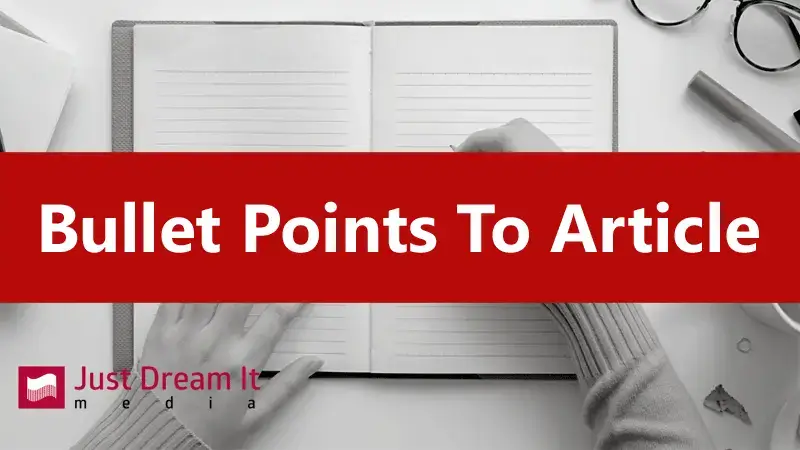
As a beginner looking to harness the power of ChatGPT for marketing analytics, it’s essential to understand the main concepts and applications of this AI-powered tool.
Here are the key points covered in the article above:
1. Introduction to ChatGPT: ChatGPT is an AI language model that can revolutionize marketing analytics with its natural language processing and understanding capabilities. It offers a wide range of applications, from content creation to data analysis.
2. Benefits of using ChatGPT: ChatGPT surpasses traditional analytics tools by simplifying the data analysis process and enabling users to analyze complex datasets quickly and efficiently. This makes it an ideal solution for both beginners and experienced marketers.
3. Enhancing data quality: ChatGPT can help you improve the quality of your data by identifying inconsistencies, duplicates, and missing values, ensuring you have a complete dataset for further analysis.
4. Insights from unstructured data: ChatGPT can process unstructured data, such as social media posts or customer reviews, and extract valuable insights that can inform your marketing strategies.
5. Identifying trends and patterns: ChatGPT can analyze large amounts of data to identify trends and patterns that might otherwise go unnoticed, helping you capitalize on emerging trends and market opportunities.
6. Content analysis: ChatGPT can be used for sentiment analysis, mining social media for consumer insights, and optimizing content and copywriting strategies, providing valuable insights for your marketing campaigns.
7. Enhancing customer segmentation and targeting: ChatGPT can help you identify customer personas, refine audience targeting, and discover hidden niches and market opportunities, ultimately improving your marketing efforts.
8. Predictive analytics: ChatGPT can be used to forecast customer behavior and trends, as well as predict campaign performance and ROI, enabling you to make data-driven decisions and optimize your marketing strategies.
9. A/B testing and optimization: ChatGPT can help you design more effective A/B tests and interpret test results, providing actionable insights for improving your marketing campaigns.
10. Integrating ChatGPT into your marketing stack: Combining ChatGPT with existing analytics tools, setting it up for seamless workflow integration, and ensuring data security and privacy are essential steps for harnessing the full potential of ChatGPT in your marketing analytics efforts.
By understanding these key points and implementing ChatGPT into your marketing analytics strategy, you can unlock powerful insights and drive better results for your business.

An action plan based on the article “Supercharge Your Marketing Analytics with ChatGPT: A Comprehensive Guide for Beginners” would involve the following steps:
1. Familiarize yourself with ChatGPT: Begin by learning about the capabilities of ChatGPT and its potential applications in marketing analytics. Understand how it can enhance data analysis, content creation, customer segmentation, and predictive analytics.
- Gold-Age Movies
- B&W and Color TV Classics
- Hand-Picked Quality Films
- 1930s - 1980s Films
- Big Studio Favorites
- Used Book in Good Condition
- English (Publication Language)
- 112 Pages - 11/01/1993 (Publication Date) - Hal...
2. Assess your current analytics tools: Evaluate your existing marketing analytics tools and processes to identify areas where ChatGPT can bring improvements and increased efficiency.
3. Integrate ChatGPT into your marketing stack: Work with your development or IT team to integrate ChatGPT with your existing analytics tools, such as Google Analytics, Adobe Analytics, or social media management platforms. Ensure that data pipelines, APIs, and authentication are set up correctly.
4. Train your team: Provide adequate training and documentation to your marketing team on how to effectively utilize ChatGPT for various marketing analytics tasks, such as data analysis, content optimization, and A/B testing.
5. Enhance data quality: Use ChatGPT to clean and preprocess your datasets, identifying inconsistencies, duplicates, and missing values to ensure the accuracy and completeness of your data.
6. Analyze unstructured data: Leverage ChatGPT’s natural language processing capabilities to extract valuable insights from unstructured data sources, such as social media posts or customer reviews.
7. Identify trends and patterns: Use ChatGPT to analyze large datasets and uncover trends, patterns, and emerging opportunities that can inform your marketing strategies.
8. Optimize content and copywriting: Apply ChatGPT’s insights to refine your content and copywriting strategies, ensuring that your marketing materials resonate with your target audience.
9. Improve customer segmentation and targeting: Utilize ChatGPT to create detailed customer personas, refine audience targeting, and discover hidden niches or market opportunities.
10. Implement predictive analytics: Leverage ChatGPT’s predictive analytics capabilities to forecast customer behavior, trends, and campaign performance, enabling you to make proactive, data-driven decisions.
11. Conduct A/B testing and optimization: Design more effective A/B tests using ChatGPT-generated variations and analyze test results to gain actionable insights for improving your marketing campaigns.
12. Ensure data security and privacy: Implement data encryption, access controls, and regular security audits to ensure the security of your data. Adhere to relevant data privacy regulations when handling customer data.
13. Monitor and refine your analytics processes: Regularly evaluate the effectiveness of your ChatGPT-enhanced marketing analytics processes, making adjustments and improvements as needed to continue driving better results for your business.
By following this action plan, you can effectively harness the power of ChatGPT to supercharge your marketing analytics and drive better results for your marketing efforts.

As a beginner looking to harness ChatGPT for marketing analytics, you may have some questions about its capabilities and applications.
Here are 10 great frequently asked questions and their answers to help you better understand ChatGPT:
1. What is ChatGPT?
Answer: ChatGPT is an AI-powered language model developed by OpenAI that can generate human-like text based on a given input. It can be used for a wide range of applications, including marketing analytics, content creation, data analysis, and more.
2. How can ChatGPT improve marketing analytics?
Answer: ChatGPT can simplify data analysis, extract insights from unstructured data, optimize content and copywriting, enhance customer segmentation and targeting, and support predictive analytics, among other tasks. This makes it a powerful tool for improving marketing analytics and driving better results.
3. Is ChatGPT difficult to integrate with my existing marketing analytics tools?
Answer: Integration may require some initial setup, such as connecting APIs or configuring data pipelines, but once integrated, ChatGPT can work seamlessly with your existing marketing analytics tools, such as Google Analytics or Adobe Analytics.
4. How does ChatGPT handle unstructured data?
Answer: ChatGPT can process and analyze unstructured data, such as social media posts or customer reviews, by leveraging its natural language processing capabilities. It can extract valuable insights from this data to inform your marketing strategies.
5. Can ChatGPT help with A/B testing?
Answer: Yes, ChatGPT can help design more effective A/B tests by generating variations for elements like headlines or images, and it can also help interpret test results to provide actionable insights for improving your marketing campaigns.
6. How can ChatGPT assist with customer segmentation?
Answer: ChatGPT can analyze customer data and identify common characteristics, preferences, and behaviors, helping you create detailed customer personas that can inform your marketing strategy and improve audience targeting.
7. Does ChatGPT support predictive analytics?
Answer: Yes, ChatGPT can analyze historical data and generate predictions for future customer behavior, trends, and campaign performance, enabling you to make data-driven decisions and optimize your marketing strategies.
- Womens Shirts Casual Summer T Shirts For Women...
- Plus Size Blouses For Women Cute Tops Flannel...
- Neon Shirts For Women White Tee Tops For Women...
- oversized button down shirts for women maternity...
- Womens Summer Clothes Womens Tops Dressy Casual...
- Y2K Tops Beach Outfits For Women Girls Fashion...
- work shirts for women strapless tops for women...
- crop tops for women sexy summer tops travel...
- black tops for women womens oversized tee shirts...
- casual tops for women trendy womens summer shirts...
- Purple Shirt For Women Shirts For Women Trendy...
- Sequin Tops For Women 80S Outfit For Women Party...
- Summer Clothes Boho Tops Going Out Top Women T...
- Workout Clothes Boho Clothes For Women T-Shirts...
- Women'S T-Shirts Graphic Tees Workout Clothes...
8. How can I ensure data security and privacy when using ChatGPT?
Answer: Implement data encryption, access controls, and regular security audits to ensure the security of your data. Additionally, adhere to relevant data privacy regulations, such as GDPR or CCPA, when handling customer data.
9. Do I need any special technical skills to use ChatGPT for marketing analytics?
Answer: While some technical knowledge may be helpful during the initial setup and integration process, ChatGPT is designed to be user-friendly and accessible for both beginners and experienced marketers. Providing your team with adequate training and documentation will ensure they can effectively use ChatGPT for marketing analytics tasks.
10. How can ChatGPT help improve my content and copywriting strategies?
Answer: ChatGPT can analyze the performance of your marketing materials, such as blog posts or email campaigns, and generate suggestions for improvement, such as more engaging headlines or persuasive calls-to-action. This can help you create content that resonates with your target audience and drives better results.
Conclusion
In summary, ChatGPT presents a powerful solution for enhancing your marketing analytics efforts by simplifying data analysis and providing valuable insights that traditional analytics tools might miss. By embracing ChatGPT and integrating it into your marketing stack, you can benefit from its AI-driven capabilities in areas such as content optimization, customer segmentation, predictive analytics, and A/B testing.
As you’ve learned from this comprehensive guide, ChatGPT has the potential to revolutionize your marketing analytics processes, driving better results for your business. Now is the time to take action and harness the power of ChatGPT. Start by familiarizing yourself with its capabilities, integrating it into your existing marketing analytics tools, and training your team on how to utilize its features effectively.
Don’t wait any longer; seize this opportunity to gain a competitive edge in the ever-evolving digital marketing landscape. By adopting ChatGPT and leveraging its AI-powered insights, you can make more informed decisions, improve marketing performance, and ultimately, drive better results for your business. Take action today and unlock the full potential of ChatGPT for your marketing analytics needs.

